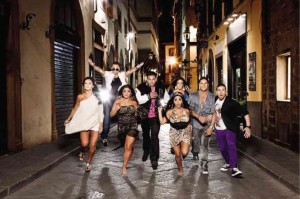“Reality” television has become a huge hit, a billion-dollar side-industry that has spawned all sorts of challenges involving non-actors as themselves. “The Apprentice,” “Survivor,” “Project Runway,” “The Real World,” “Real Housewives,” “Jersey Shore,” “Pregnant in Heels,” “The Bachelor”—these are only a few of the literally hundreds of “reality TV” programs that have practically taken over the TV scene.
What accounts for their popularity? Since they don’t require expensive actors, they’re much cheaper to make than fictive drama series. Also a major drawing factor is their purported or actual reality, which assures viewers that they’re seeing life as it really is, sans artifice and storytelling expertise.
But, how real is Reality TV, really? Some pioneers in the program type since its early days in the 1990s confess that, while the people shown on-cam aren’t actors and are “being” themselves, some “tweaking” has been done to make the proceedings more organized, interesting and “exciting”!
‘Tweaking’
The “tweaking” comes in many forms. For instance, the choice of people to participate in the challenge is key. The pioneers, who were involved in such seminal shows as “The Real World,” “Fear Factor” and “Survivor,” reveal that they were on the lookout for auditionees who were young, not self-conscious in front of the TV cameras, a bit “exhibitionistic,” and “conflicted” about an issue or problem in their young lives.
So, in the very act of choosing specific on-cam people, the shows were already subliminally “shaping” how they wanted their productions and challenges to progress.
Moreover, they occasionally threw in additional irritants or causes of conflict for their tilt’s contestants to emotionally react to, like two guys being instructed to get romantically interested in a female member of their group. This opened the show up to conflicts that wouldn’t otherwise have arisen, and made the proceedings more “eventful.”
The pioneers go on to recall that, as they became more experienced at handling the new program type, they eventually stopped “interfering” in this wise, because they discovered that real conflicts were more interesting than anything they could think up to “spice up” their new concoction!
But, this definitely didn’t mean that the tweaking stopped. They found out that they could do a lot to “shape” their show’s proceedings through the artful and savvy use of editing, choosing only taped footage that canted the way that viewers perceived some contestants’ unfolding relationships in a dramatically subjective way.
Since a reality show ends up with thousands upon thousands of feet of taped footage, it has become a new art and crafty craft to spot the particular “moments” that would keep the viewers “addicted” to watching the program from start to finish each telecasting day!
Subliminal ‘shaping’
So, the next time you watch an ostensibly unscripted and non-acted reality show, please realize that, while actuality is still of the essence, some subliminal “shaping” is actually involved in the finished program that you’re viewing. Indeed, the show couldn’t possibly succeed or even make sense otherwise.
If everything was allowed to unreel in absolutely real fashion, it would all end up as an unpretty and unfocused mess!
The key objective, of course, is for the subliminal tweaking and pointing up not to be noticed and take over the whole production in much too obvious and hard-sell a fashion, so viewers can still believe in and empathize with what they’re watching!
